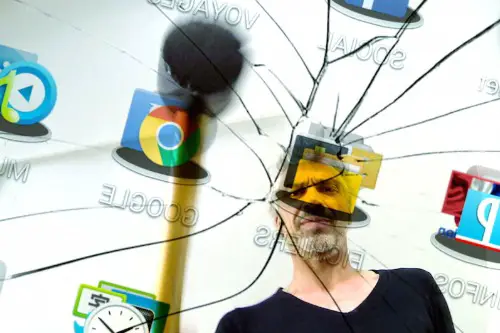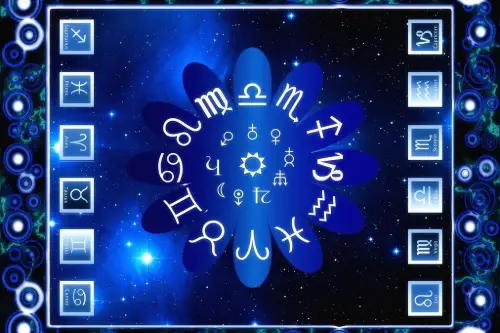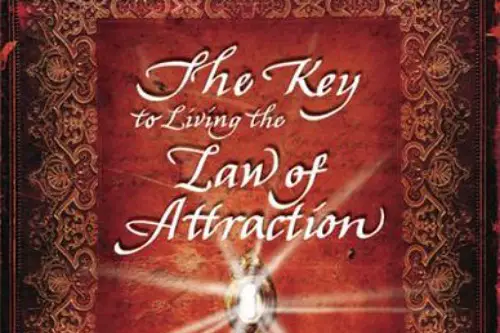1. Digital Detox Retreats for the Spiritually Exhausted

Retreats that promise a tech-free, soul-renewing experience are popping up everywhere—from Joshua Tree to Hudson Valley. They advertise healing through silence, nature, and self-discovery, often with hefty price tags. Many offer guided meditation, yoga, and farm-to-table meals—an all-inclusive path to finding yourself offline. But for something framed as “getting back to basics,” it’s usually extremely curated.
These retreats capitalize on burnout by offering curated disconnection, which ironically requires a lot of logistical coordination. They promote spiritual simplicity while often serving an affluent clientele. Disconnecting becomes a luxury product, not a universal need. For a practice about letting go, there’s a lot of brand partnerships involved.
2. Mindfulness Apps for Your Commute

Meditation used to mean sitting quietly and breathing; now it often means plugging into a sleek app with a monthly fee. Apps like Headspace and Calm promote mindfulness but have pivoted hard into lifestyle branding, partnering with airlines and celebrities. They’re selling peace of mind—but only if you remember to turn off notifications. The vibe is less monastery, more UX design with ocean sounds.
These apps market themselves as spiritual tools, but what they mostly offer is productivity optimization. Meditation breaks are reframed as ways to “reset and refocus,” not exactly paths to enlightenment. While they can be helpful for stress, they’re also deeply integrated with the hustle mindset. Inner peace, brought to you by push alerts and premium tiers.
3. Astrology, But Make It Personalized and Push-Notified

Astrology used to be that section in the back of a magazine, now it’s a full-on tech experience. Apps like Co–Star and The Pattern deliver cryptic cosmic messages straight to your phone using NASA data and moody aesthetics. They promote self-awareness, but also conveniently boost engagement by pinging you when Mercury is ruining your vibe. It feels spiritual until you realize your emotional forecast is being A/B tested.
These apps encourage introspection but rarely accountability, making them more like therapeutic mirrors than mystical maps. They’re sleek, algorithmically tailored, and endlessly shareable—which is great for business. Your birth chart becomes less of a guide and more of a brand. Spiritual self-discovery, now with social features.
4. Burning Sage, But Make It a Lifestyle

Smudging with sage has been adopted widely by wellness influencers and brands as a spiritual cleansing ritual. Originally a sacred Indigenous practice, it’s now packaged in minimalist bundles and sold at Urban Outfitters. The ritual is marketed as a way to clear bad energy—but the context and culture behind it are often left out. It’s spirituality by way of aesthetic minimalism and shelf appeal.
Sage bundles are now sold alongside candles and moon water, promising a vibe rather than a belief system. This trend flattens a complex tradition into a home décor item. It’s less about spiritual grounding and more about Instagrammable ambiance. Cultural roots get swapped for retail markup.
5. Yoga, Rebranded for the Boardroom

Yoga in America has evolved from a spiritual discipline to a branded workout with designer leggings. Studios market “power flows” and “yoga sculpt” more like boutique fitness than meditative practice. The original intent of yoga—as a holistic spiritual path—is often replaced with calorie burn and a curated playlist. Even corporate offices now offer “mindful yoga breaks” to boost productivity.
There’s nothing wrong with physical movement, but the spiritual depth of yoga is frequently sidelined. It’s become a way to sweat with a side of Sanskrit. And with prices that rival monthly gym memberships, the accessibility of true practice is lost. Spiritual connection, now with towel service.
6. Manifestation Culture with Merch

Manifestation—essentially the belief that positive thoughts attract positive outcomes—has exploded across social media. Influencers promote vision boards, affirmation journals, and branded crystals, turning the Law of Attraction into a lifestyle. While rooted in older New Thought spiritual movements, today’s manifestation is often more capitalism than consciousness. It’s belief, marketed with a Shopify backend.
The practice is framed as empowering, but it often overlaps with toxic positivity. If your dreams don’t come true, maybe you just didn’t manifest hard enough. It’s spiritual practice wrapped in personal branding. The universe will provide—but only if you buy the workbook.
7. “WitchTok” and the Rise of Branded Magic

TikTok has become a hotbed for modern witchcraft content, with users sharing spell jars, tarot pulls, and moon rituals. Many creators genuinely explore pagan or spiritual traditions, but others are clearly building product lines. Crystals, spell kits, and astrology decks are sold with pastel packaging and affiliate links. Magic, but make it algorithm-friendly.
This version of witchcraft feels empowering and personal, but it’s also heavily commodified. It trades sacred symbols for social media engagement. The line between spiritual exploration and trend-based consumption blurs quickly. It’s not always clear if you’re watching a ritual or a product demo.
8. Crystal Healing with a Price Tag

Crystals are marketed as tools for energy healing, spiritual protection, and manifestation—but they also happen to look great on coffee tables. Rose quartz, amethyst, and selenite are sold in bundles, often with short blurbs about “vibrations” and “alignment.” There’s no scientific backing for their healing claims, but that doesn’t stop the $60 price tag. They promise transformation—ideally while matching your home’s color palette.
This trend simplifies deep metaphysical beliefs into decorative accessories. It sells spiritual wellness through the lens of interior design. There’s often little mention of the mining ethics or spiritual origins behind these stones. The message is: clear your chakras, but don’t clash with your sofa.
9. Breathwork as a Branded Experience

Breathwork, an ancient practice with roots in yoga and Eastern philosophy, has become a buzzy wellness service. Studios and influencers offer sessions that promise emotional release, trauma healing, and “elevation of consciousness.” It’s powerful stuff—but now available as part of a monthly membership or streaming subscription. You might even get a branded eye mask.
These sessions often emphasize quick transformation, turning breath into a commodity. What used to be a deeply personal or spiritual experience is now optimized for scale. The emphasis on healing is real, but the packaging is undeniably polished. It’s transcendence, curated by a wellness startup.
This post 9 Lifestyle Trends That Feel Spiritual But Mostly Sell Candles and Apps was first published on American Charm.


